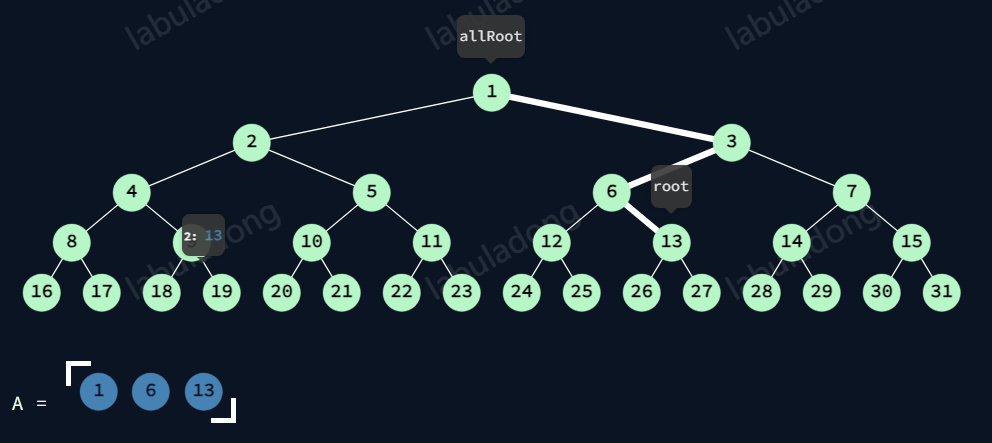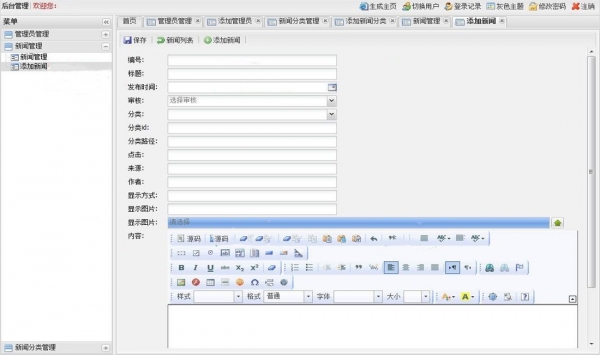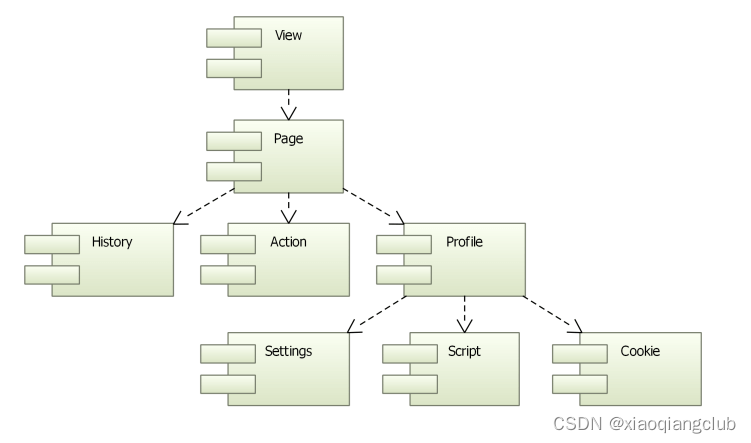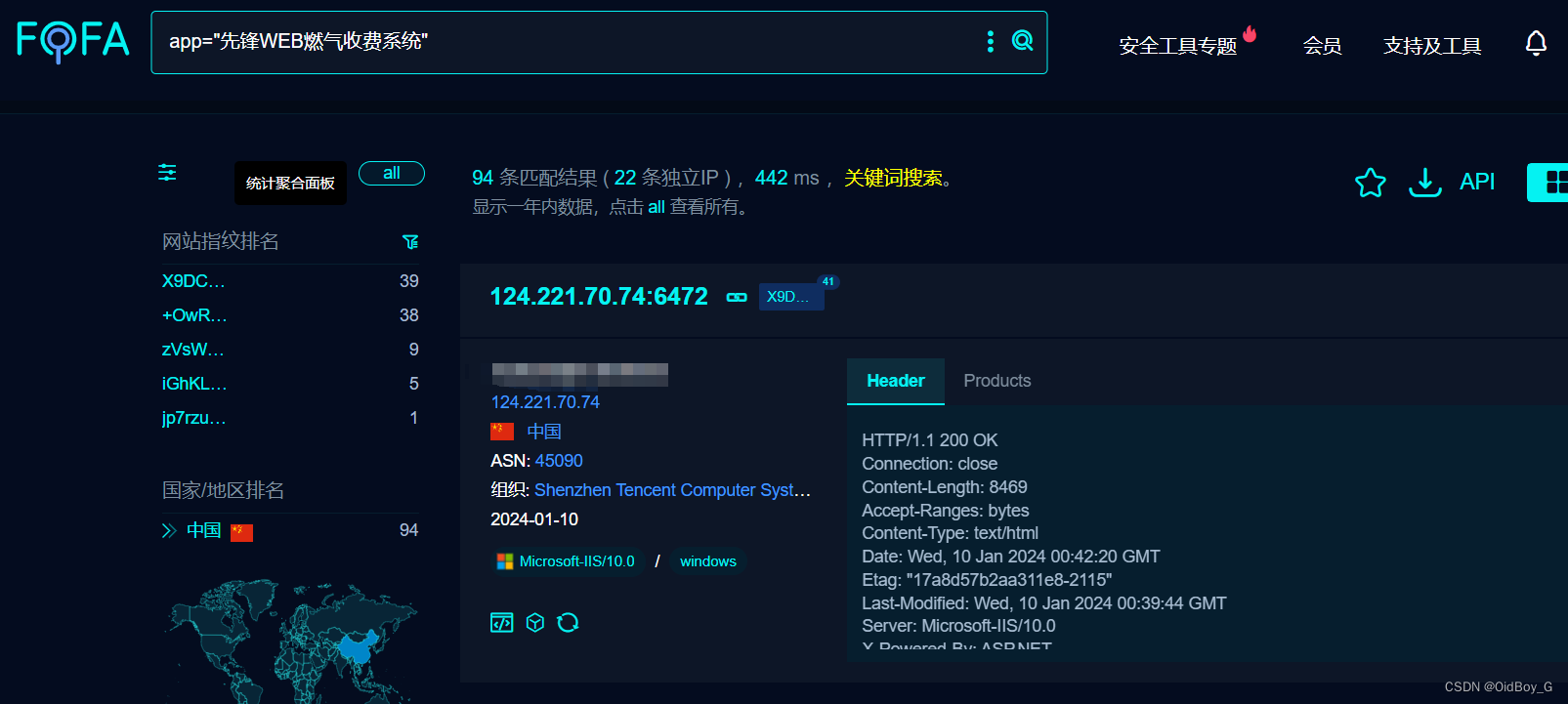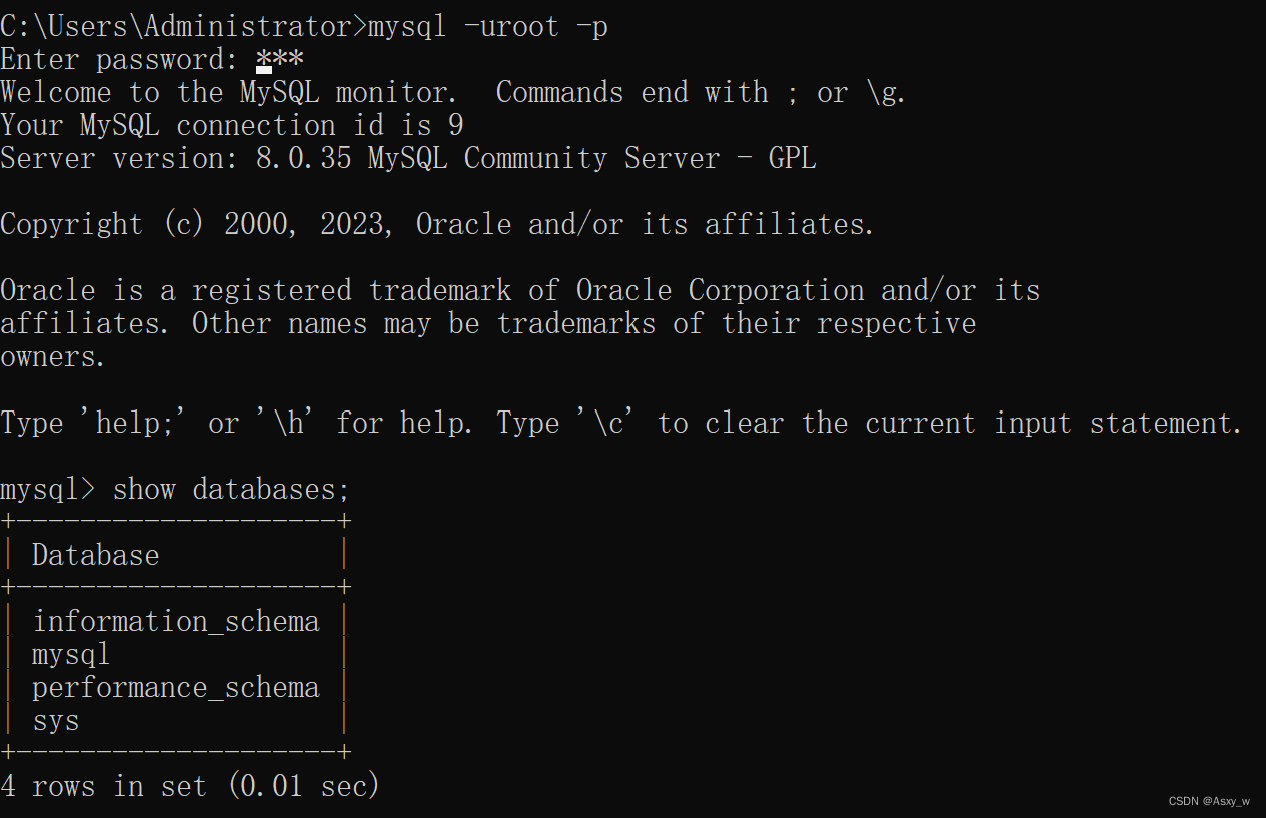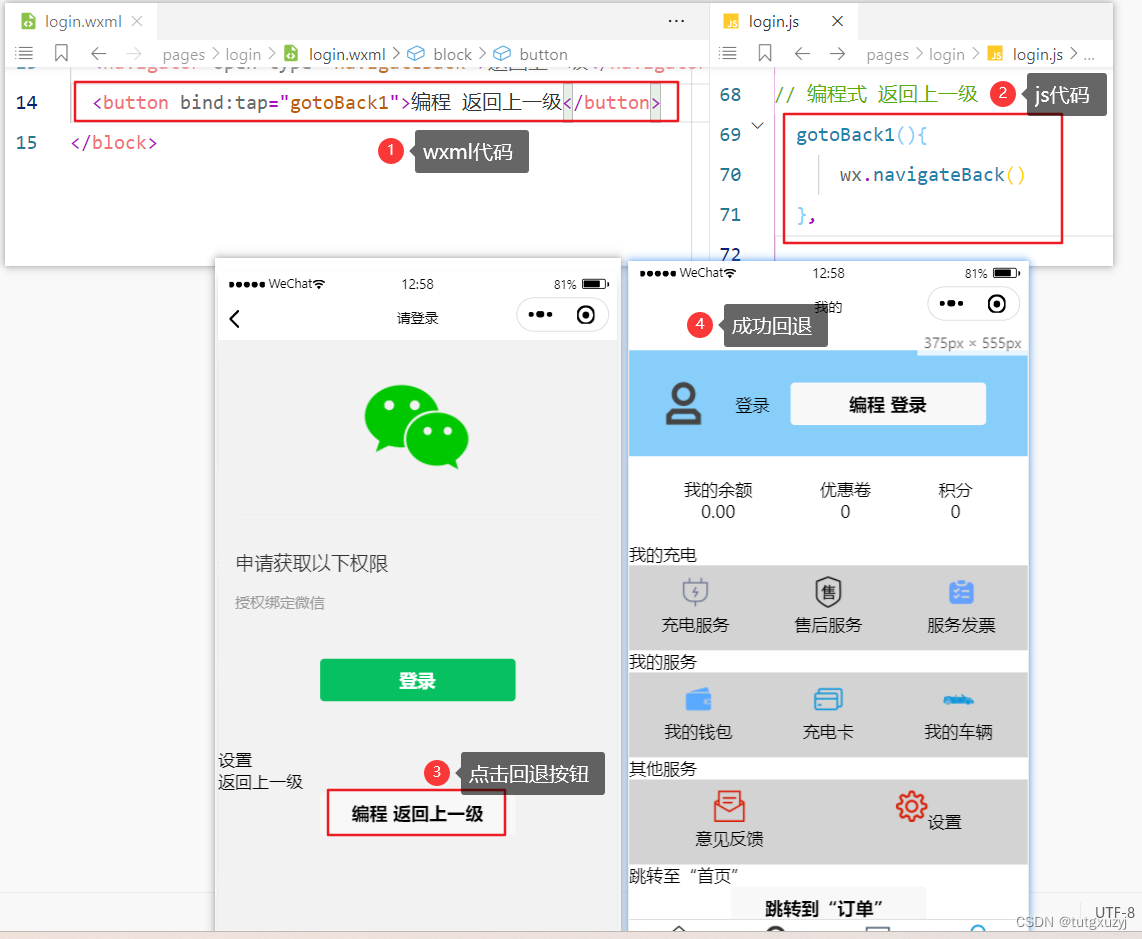内联函数声明和定义不能分开
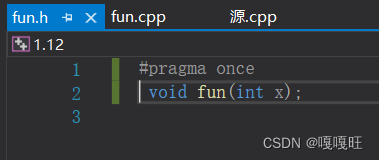
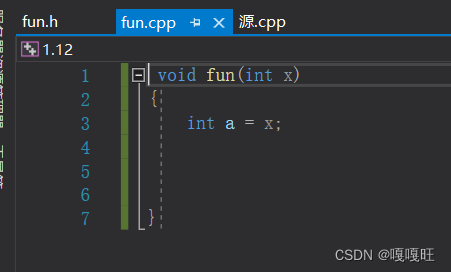
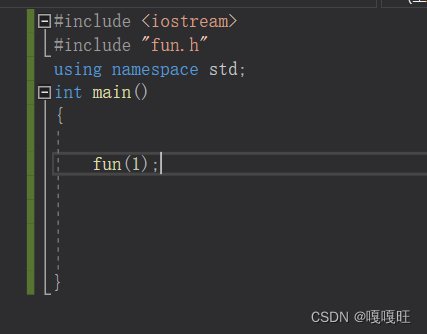
inline不建议声明和定义分离,分离会导致链接错误。因为inline被展开,就没有函数地址
了,链接就会找不到。
auto关键字
随着程序越来越复杂,程序中用到的类型也越来越复杂,经常体现在:
- 类型难于拼写
- 含义不明确导致容易出错
我们可以想到可以通过typedef给类型取别名,使用typedef给类型取别名确实可以简化代码,但是typedef有会遇到新的难题:
#include <iostream>
using namespace std;
typedef char* pstring;
int main()
{
const pstring p1; // 编译成功还是失败?
const pstring* p2; // 编译成功还是失败?
return 0;
}
在编程时,常常需要把表达式的值赋值给变量,这就要求在声明变量的时候清楚地知道表达式的
类型。然而有时候要做到这点并非那么容易,因此C++11给auto赋予了新的含义。
#include <iostream>
using namespace std;
typedef char* pstring;
int main()
{
const pstring p1=nullptr; // 编译成功还是失败?
const pstring* p2; // 编译成功还是失败?
return 0;
}
auto可以自动推断出变量的类型
#include <iostream>
using namespace std;
int main()
{
int a = 5;
auto b = a;
auto c = &a;
cout << typeid(b).name() << endl;
cout << typeid(c).name() << endl;
}
在c++中使用这个typeid(变量名).name()会知道变量类型
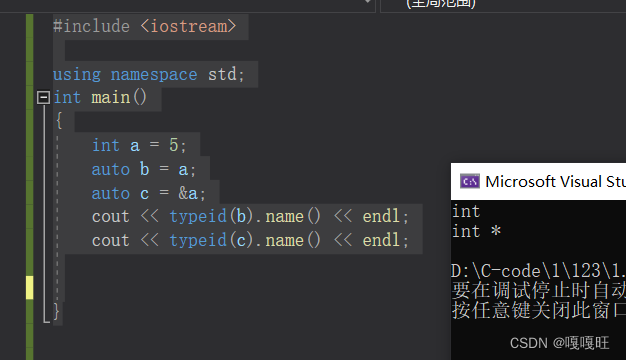
【注意】
使用auto定义变量时必须对其进行初始化,在编译阶段编译器需要根据初始化表达式来推导auto
的实际类型。因此auto并非是一种“类型”的声明,而是一个类型声明时的“占位符”,编译器在编
译期会将auto替换为变量实际的类型。
#include <iostream>
using namespace std;
int main()
{
int a = 5;
auto c = &a;
auto* d = &a;
cout << typeid(c).name() << endl;
cout << typeid(d).name() << endl;
}
auto后面加一个*是说明d变量是个指针类型.
在同一行定义多个变量
当在同一行声明多个变量时,这些变量必须是相同的类型,否则编译器将会报错,因为编译
器实际只对第一个类型进行推导,然后用推导出来的类型定义其他变量。
void main()
{
auto a = 1, b = 2;
auto c = 3, d = 4.0; // 该行代码会编译失败,因为c和d的初始化表达式类型不同
}
基于范围的for循环
#include <iostream>
using namespace std;
int main()
{
int arr[] = { 5,4,9,6,3,1,8,7,5 };
for (int i = 0; i < sizeof(arr) / sizeof(arr[0]); i++)
{
cout << arr[i] << endl;
}
}
如果使用语法糖的话
#include <iostream>
using namespace std;
int main()
{
int arr[] = { 5,4,9,6,3,1,8,7,5 };
for (auto a : arr)
{
cout << a << " ";
}
}
这样会方便很多.目前只适用于数组
指针空值nullptr
#include <iostream>
using namespace std;
void f(int)
{
cout << "f(int)" << endl;
}
void f(int*)
{
cout << "f(int*)" << endl;
}
int main()
{
f(0);
f(NULL);
return 0;
}
NULL实际是一个宏,在传统的C头文件(stddef.h)中,可以看到如下代码:
#ifndef NULL
#ifdef __cplusplus
#define NULL 0
#else
#define NULL ((void *)0)
#endif
#endif
可以看到,NULL可能被定义为字面常量0,或者被定义为无类型指针(void*)的常量。
对于上面两个重载函数,都会被认为调用的是第一个函数
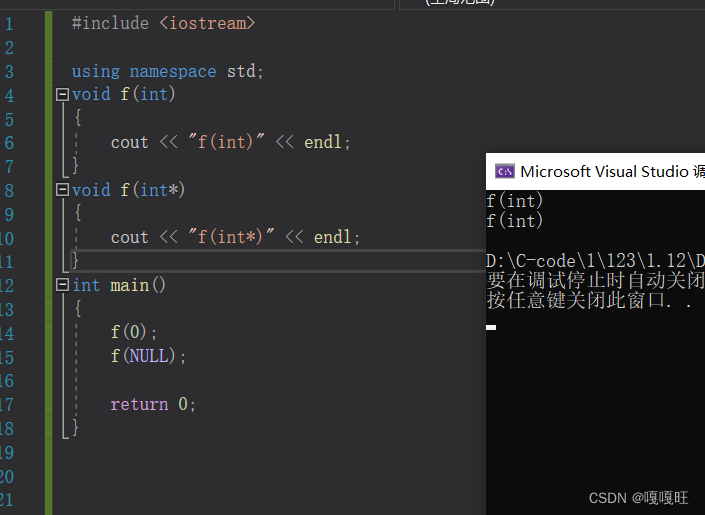
#include <iostream>
using namespace std;
void f(int)
{
cout << "f(int)" << endl;
}
void f(int*)
{
cout << "f(int*)" << endl;
}
int main()
{
f(0);
f(nullptr);
return 0;
}
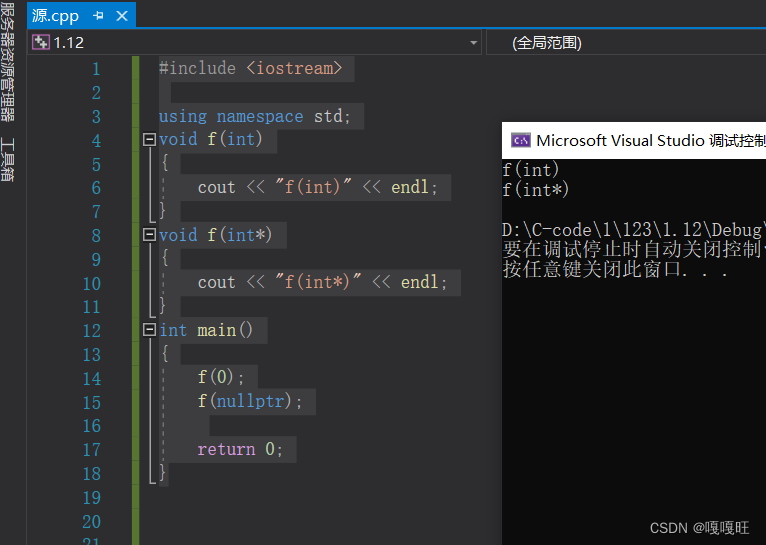
程序本意是想通过f(NULL)调用指针版本的f(int*)函数,但是由于NULL被定义成0,因此与程序的
初衷相悖。
注意:
- 在使用nullptr表示指针空值时,不需要包含头文件,因为nullptr是C++11作为新关键字引入
的。 - 在C++11中,sizeof(nullptr) 与 sizeof((void*)0)所占的字节数相同。
- 为了提高代码的健壮性,在后续表示指针空值时建议最好使用nullptr。





